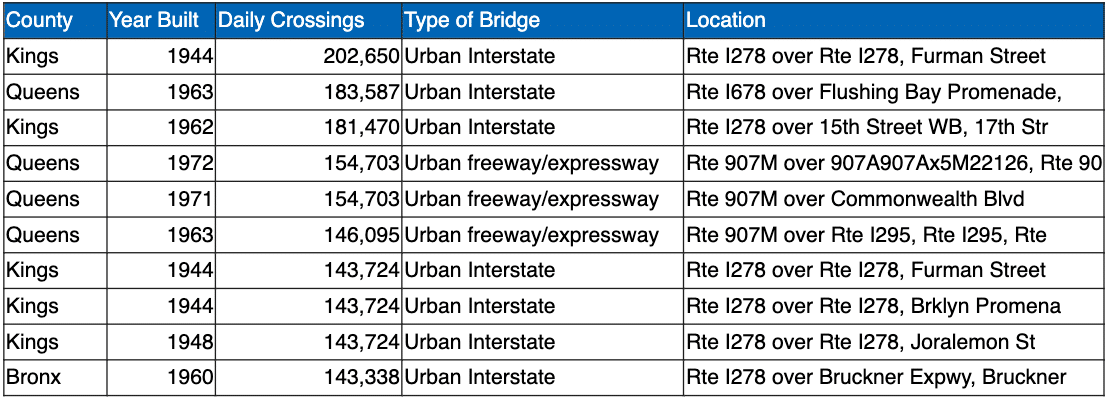Recent Bridge and Gangway Collapses Raise Alarming Questions About the Safety of New York’s Bridges

This past month, two devastating infrastructure failures shook the nation: a ferry gangway collapse in Georgia plunged 20 people into the water, killing seven, while a bridge collapse over the Strong River in Mississippi claimed the lives of three workers and injured four others during demolition preparations. These tragic events highlight the risks posed by aging and neglected infrastructure, emphasizing the need for proactive safety measures to avoid similar disasters elsewhere.
How Safe Are New York’s Bridges?
New York is not immune to these risks. According to a 2024 report from the American Road and Transportation Builders Association, 10% of New York State’s 17,642 bridges are classified as structurally deficient, signaling significant safety challenges. Even more concerning, the 10 worst bridges in the state are all located in New York City, including critical components of I-95, the Bruckner Expressway, and the elevated section of the Brooklyn-Queens Expressway (BQE) near the Brooklyn Promenade.
These bridges serve millions of commuters daily and are essential for New York’s economy. However, structural deficiencies, environmental wear, and delays in repairs threaten their safety. Below some of the most heavily traveled structurally deficient bridges in New York that require immediate attention:
Top Most Traveled Structurally Deficient Bridges in New York

To view the report click here: https://artbabridgereport.org/
Proactive Action Can Save Lives
The recent collapses are a wake-up call: infrastructure failures can happen at any time, anywhere, with deadly consequences. New York’s bridges, especially those in poor condition and high-traffic areas, must be addressed now. Preventative maintenance and safety investments are not just necessary—they are lifesaving.
It’s time for policymakers to take action before New York becomes the next headline. The stakes are too high to delay.
Related Posts
Categories